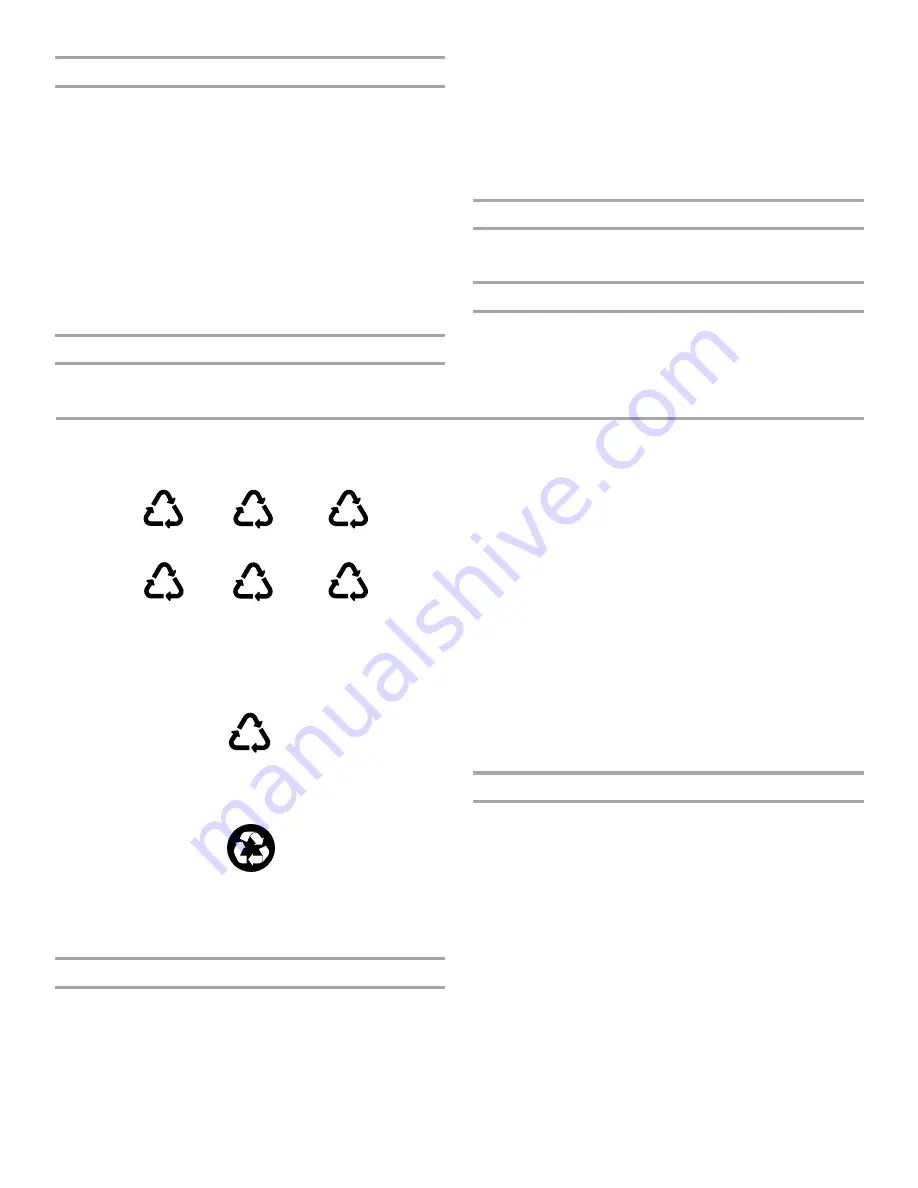
10
Your compactor won’t operate
■
Is the power supply cord unplugged? Plug into a grounded
3 prong outlet.
■
Has a household fuse blown, or has a circuit breaker
tripped? Replace the fuse or reset the circuit breaker. If the
problem continues, call an electrician.
■
Is the drawer completely closed? Close the drawer firmly
and start the compactor again.
■
Is the Key-Knob turned all the way to START? Turn the
Key-Knob (Key-Switch) fully to START and release (on some
models). See “Starting Your Compactor.”
■
Did you press ON before pressing START? Press ON
before pressing START (on some models). See “Starting Your
Compactor.”
The drawer won’t open
■
Is the ram all the way up? Drawer will open only when ram is
fully raised.
To raise the ram on models with a Key-Knob (or Key-
Switch): Turn the Key-Knob (Key-Switch) to START and
release. See “Starting Your Compactor.”
To raise the ram on models with push button controls:
Press OFF, and then press ON. See “Starting Your
Compactor.”
■
Is the Compress Cycle engaged? Drawer remains LOCKED
until you reset by lifting the foot pedal up.
There is not enough compaction or force
■
Do you use the compacting cycle frequently enough?
Compacting works best when only a few items are loaded.
Bottles don’t break
■
How often do you notice this? Bottles will not break every
time. The thickness of the bottle’s glass and the content of
the trash load below it may keep the bottle from breaking.
RECYCLING WITH YOUR COMPACTOR
A compactor makes recycling and landfill reduction efforts more
effective and efficient.
Recycling Guidelines
Contact your community recycling program or local recycling
organizations to find out which items are accepted for recycling
and how they should be prepared and organized. These
programs will provide essential recycling guidelines:
■
Method and frequency of collection—curbside collections
and drop-off centers.
■
Categories of recyclable items, and how to distinguish
between them. Plastic containers are identified by codes on
the bottom. Sort by the numbers inside the triangular arrows.
For example, most plastic soda bottles and some cleaning
bottles have code 1; most milk and water jugs, laundry and
personal hygiene product containers have code 2. Paper and
cardboard containers (paperboard) also have recycle
symbols to indicate a container is recyclable.
■
Preparations of recyclable items. Most recycling programs
provide specific guidelines on preparation. For example,
aluminum cans and plastic containers need to be rinsed out,
lids removed, but often labels can be left on.
IMPORTANT:
■
Some items, such as glass, should not be compacted.
■
Most recycling programs will not accept crushed glass.
■
Check with your recycling program for specific guidelines on
preparing recyclables.
Organizing the Recycling Workspace
Convenient recycle bins are made to fit in the compactor drawer.
These bins, as well as plastic compactor bags, can be purchased
in a variety of colors at hardware stores and supermarkets. Set
up a system of color-coded bags in an area chosen for
processing recyclables. Each color can represent a category of
recyclable items, based on types specified by your recycling
program. Separate recyclable items from non-recyclable items:
■
Recyclable items can be sorted using the color-coded bags.
Prepare items according to guidelines provided by your
recycling program.
■
Non-recyclable items should be compacted because
compaction reduces trash volume to its original size: four
bags of trash can be compacted into one bag. This
contributes to reducing landfill volume and related waste
transportation burdens.
REMEMBER: Do not expect items which contain minimal air,
such as folded newspapers, to compact significantly.
These codes indicate which type of plastic was
used in manufacturing the container. Your
recycling program will confirm which codes are
accepted for recycling.
Plastics with this symbol cannot be recycled.
Items with this symbol can be recycled or were
made from recycled materials.
1
PETE
2
HDPE
3
V
4
LDPE
5
PP
6
PS
7
OTHER

























